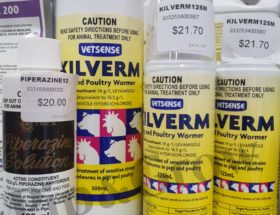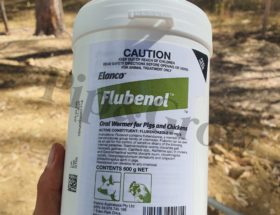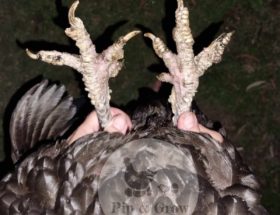Poultry red mites, also known as Dermanyssus gallinae, are ectoparasites that feed on the blood of chickens and other birds. These mites are tiny, ranging from 0.5 to 1 millimeter in size, making them barely visible to the naked eye. Despite their small size, they can cause significant harm to poultry flocks and are considered a major pest among poultry keepers worldwide.
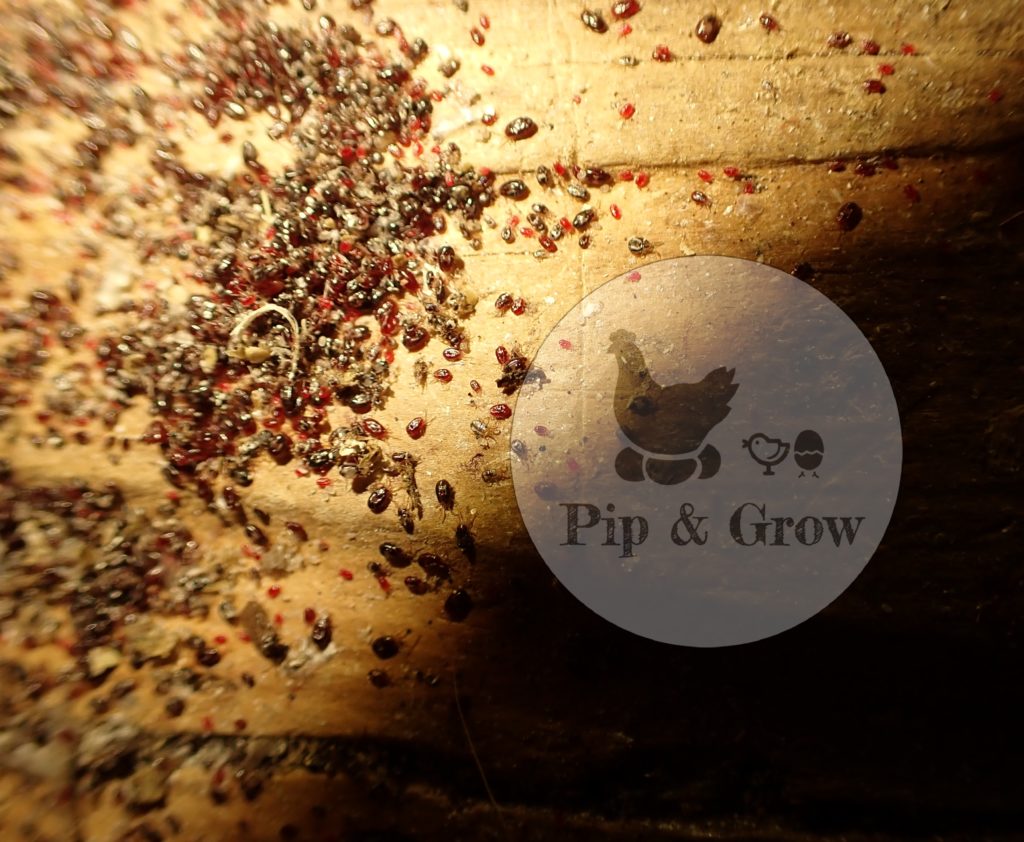
Life Cycle & Active season
Poultry red mites undergo a rapid life cycle consisting of five stages: egg, larva, protonymph, deutonymph, and adult. Under optimal conditions, such as temperatures between 20 to 25 degrees Celsius and relative humidity levels above 70%, the entire life cycle typically lasts around 7 to 14 days. However, this timeframe can vary depending on environmental factors like temperature and humidity.
During warm and humid conditions, the life cycle of red mites shortens, allowing for quicker reproduction and population growth. As a result, infestations can escalate rapidly in such environments. This explains why outbreaks are more prevalent during the transition from colder to warmer seasons.
Conversely, during the cold season, red mite infestations may go unnoticed for extended periods. This is because the signs presented by affected birds are often subtle initially, and the slower reproductive rate of mites in colder temperatures may delay the visible effects of infestation. Therefore, it’s essential for poultry keepers to remain vigilant and regularly monitor their flocks for signs of red mite infestation, even during the colder months. Additionally, it’s important to note that red mites can survive without feeding for up to 10 months in the coop.
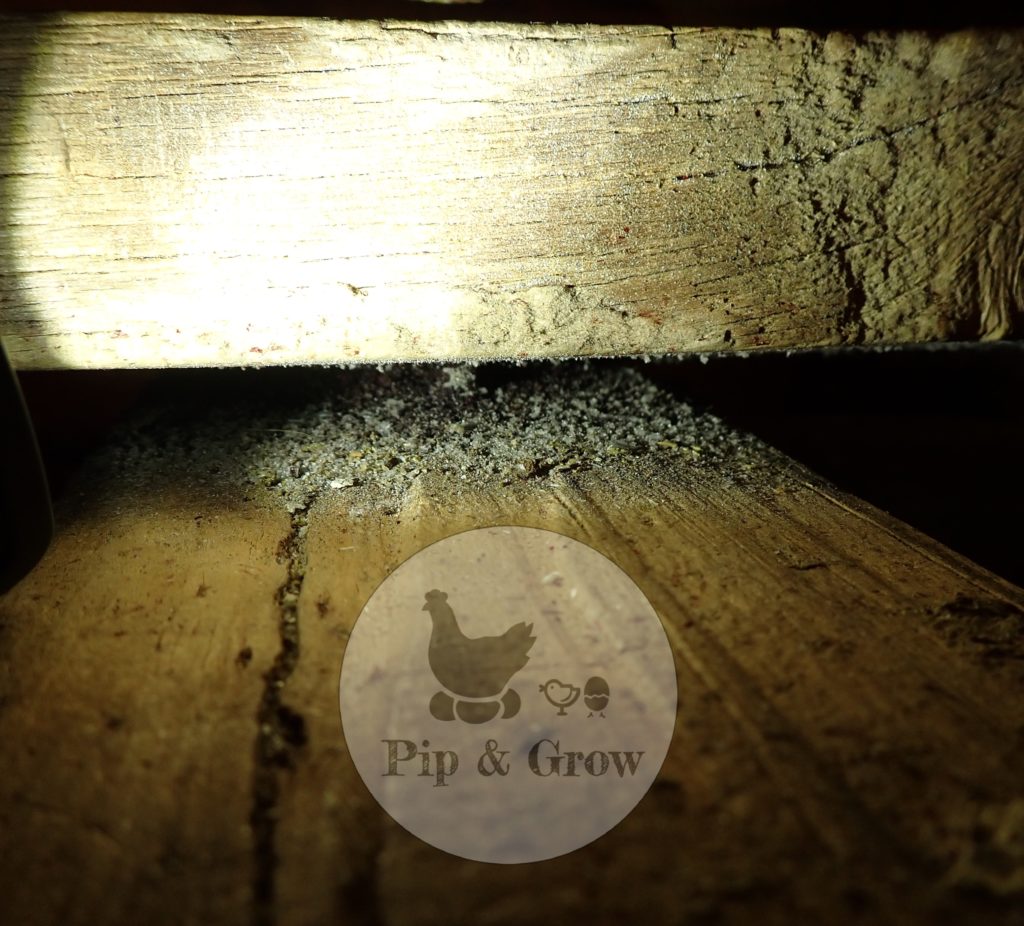
Checking for red mites in your poultry housing
Red mites do not live on birds. They are nocturnal parasites, hiding in cracks and crevices of poultry housing during the day and emerging at night to feed on the blood of chickens while they roost. They can feed on chickens for up to an hour before returning to their hiding places. This means that visual identification of red mites on birds during the day may be rare, especially if the infestation is not severe.
Common hiding spots for red mites include screw holes, nail holes, small cracks, splits, under hinges, and beneath roof sheets, among others. This preference for secluded spaces underscores why many poultry keepers opt for metal pens over wooden ones, as metal structures offer fewer hiding places and are thus less conducive to red mite infestations.
To detect red mite infestations, a nighttime inspection( around 9-12pm) is recommended. By using a torch and kitchen paper, poultry keepers can closely examine the roost where the chickens sleep. Red mites may be visible crawling along the surface of the roost or hiding in the surrounding cracks and crevices. Wiping the underside of the roost with kitchen paper can also reveal the presence of red mites, indicated by tiny dots, often accompanied by red blood dots.
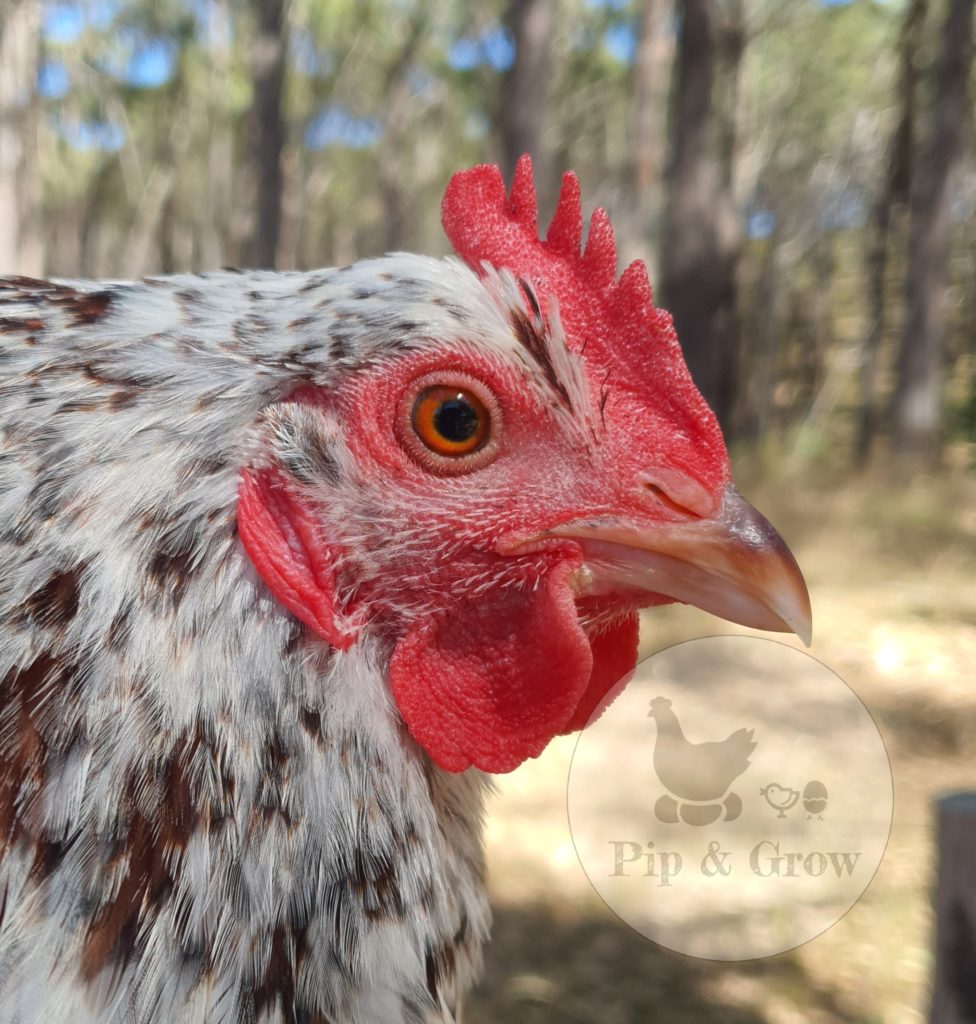
Health Effects on Chickens
Poultry red mites can cause a range of health issues in chickens. Continuous blood loss from mite infestations can lead to anemia, reduced egg production, weight loss, decreased immune function, Feather pecking, restlessness, show changes in sleep patterns and associated roost positions – chickens suddenly don’t want to go to bed or trying to sleep on other places, increased susceptibility to other diseases from restless nights and loss of blood. Severe infestations can result in death, especially in young or weak birds.
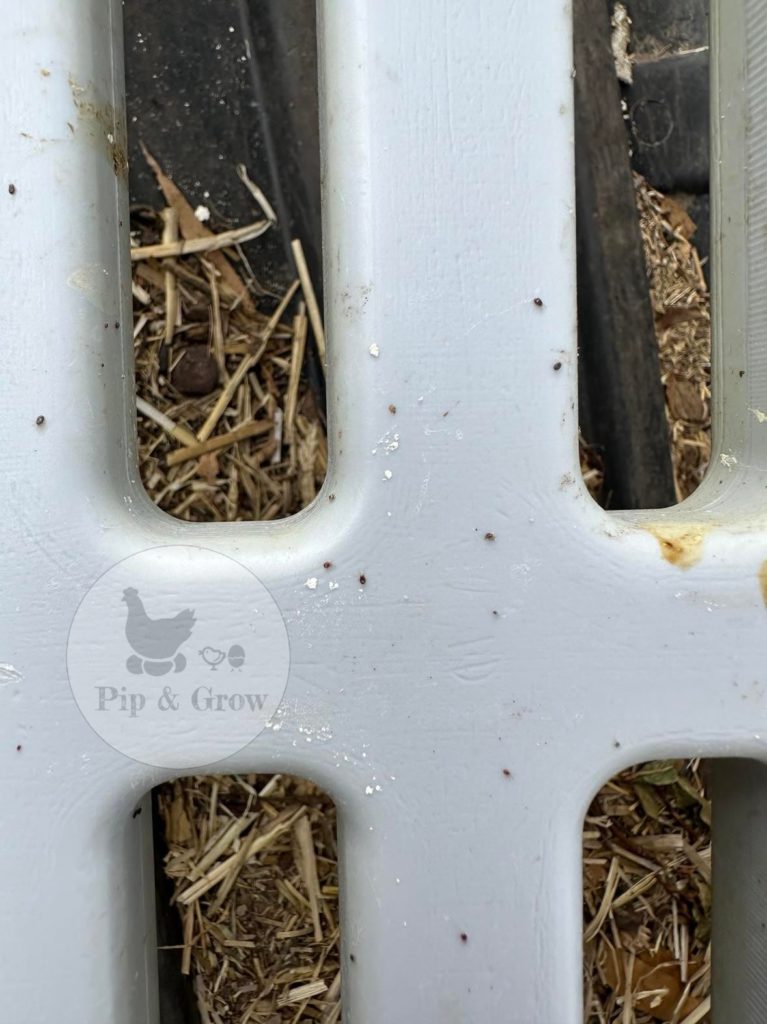
Prevention is the Key
- Wild birds are frequently the primary source of red mite transmission. If your chickens share their feeders and waterers with wild birds inside the pen, they will share mites to your flock.
- Rodents serve as the secondary culprit in mite transmission.
- Biosecurity measures should extend beyond the chickens themselves to include equipment. When acquiring second-hand coops, it’s crucial to implement thorough checks for signs of mites before use. Even if a coop appears free of mites, it’s prudent to treat it for mites beforehand as a precautionary measure. Additionally, sanitizing the coop with appropriate products such as Virkon S or F10 before introducing chickens can help prevent the spread of diseases or pathogens.
- Regularly clean and disinfect poultry housing, paying particular attention to cracks, crevices, and other hiding places where mites may reside. Remove and replace bedding regularly.
- Seal cracks and gaps in poultry housing to reduce hiding spots for mites. Consider using metal or plastic materials for construction instead of wood, as they offer fewer hiding places for mites.
- Keep poultry housing well-ventilated and dry, as mites thrive in warm, humid environments. Use fans or ventilation systems to improve air circulation and reduce humidity levels.
- Conduct regular inspections of poultry housing for signs of mites, such as powdery residue or crawling mites. Monitor chicken behavior for indications of discomfort, such as excessive scratching or feather loss.
Controlling infestation
Controlling a red mite infestation requires a comprehensive approach to effectively eradicate these pests from your poultry housing.
- Before starting treatment, prepare a temporary pen or designated area where your chickens can stay during the cleaning and treatment process. This will ensure their safety and prevent them from reinfesting the treated area.
- Take out all items from the poultry housing, including feeders, waterers, roosts, bedding, nest boxes, and any other removable items. Dispose of the bedding properly—avoid placing it in your garden or compost to prevent spreading mites. Instead, burn the bedding or dispose of it in a green bin located away from the chicken pen.
- Using a pressure washer, thoroughly clean all surfaces inside the poultry housing, including walls, floors, roosts, and nest boxes, Start from the top and work your way down, ensuring that every area is cleaned thoroughly. Allow the surfaces to dry completely before proceeding.
From this juncture, the choice rests entirely with the keeper. They may opt for chemical, biological, or natural control methods—or even decide to implement a combination of all options simultaneously.
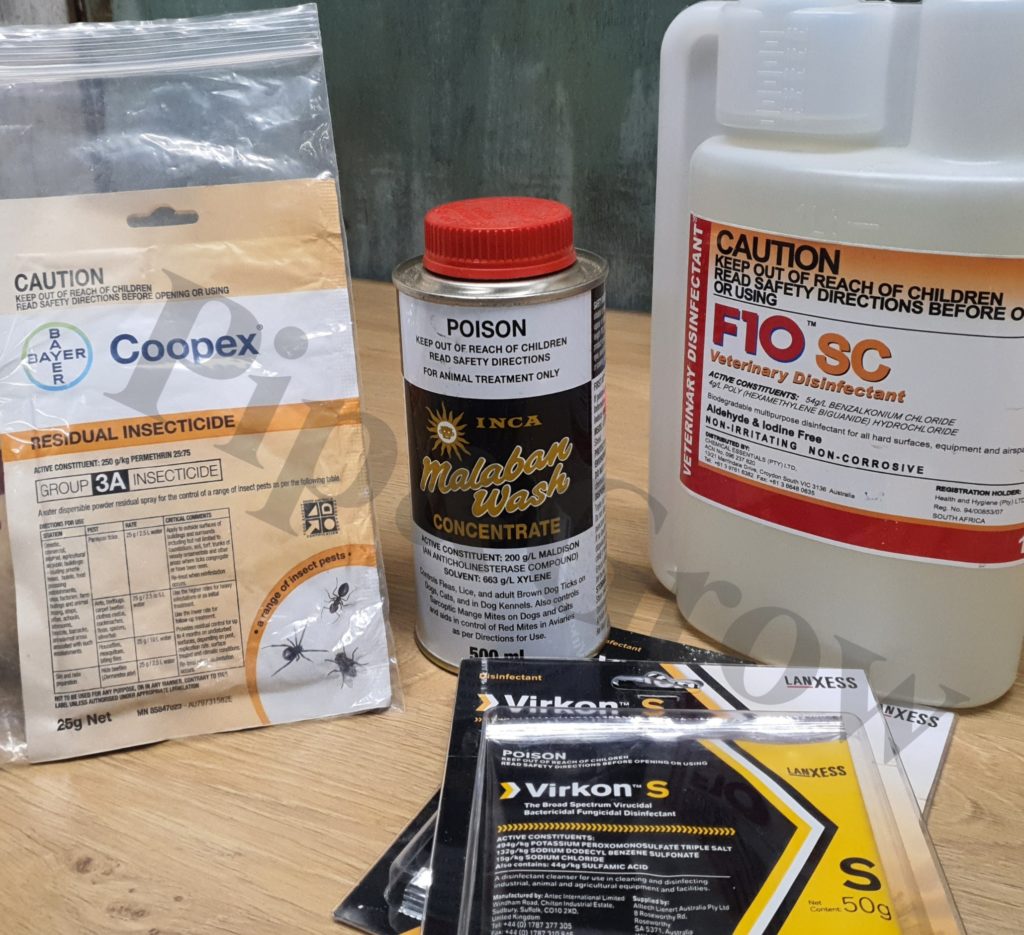
Chemical Control – Pens & Coops
Several products are available in the market as targeted contact residual insecticides for red mites which can be used for spraying coops. These insecticides maintain their efficacy over a period of time, ensuring that any mites coming into contact with treated surfaces will be impacted.
- Coopex is readily accessible in Australia at Bunnings , effective and affordable option
- Malaban or Malawash are commonly found at poultry supplies and fodder stores. Malawash is a commonly used and recommended insecticidal wash in poultry management. However, it’s important to note that it has been banned in various countries due to health risks associated with its use. Additionally, repeated application of Malawash may result in mite populations developing resistance over time, underscoring the necessity of rotating control methods to sustain effectiveness.
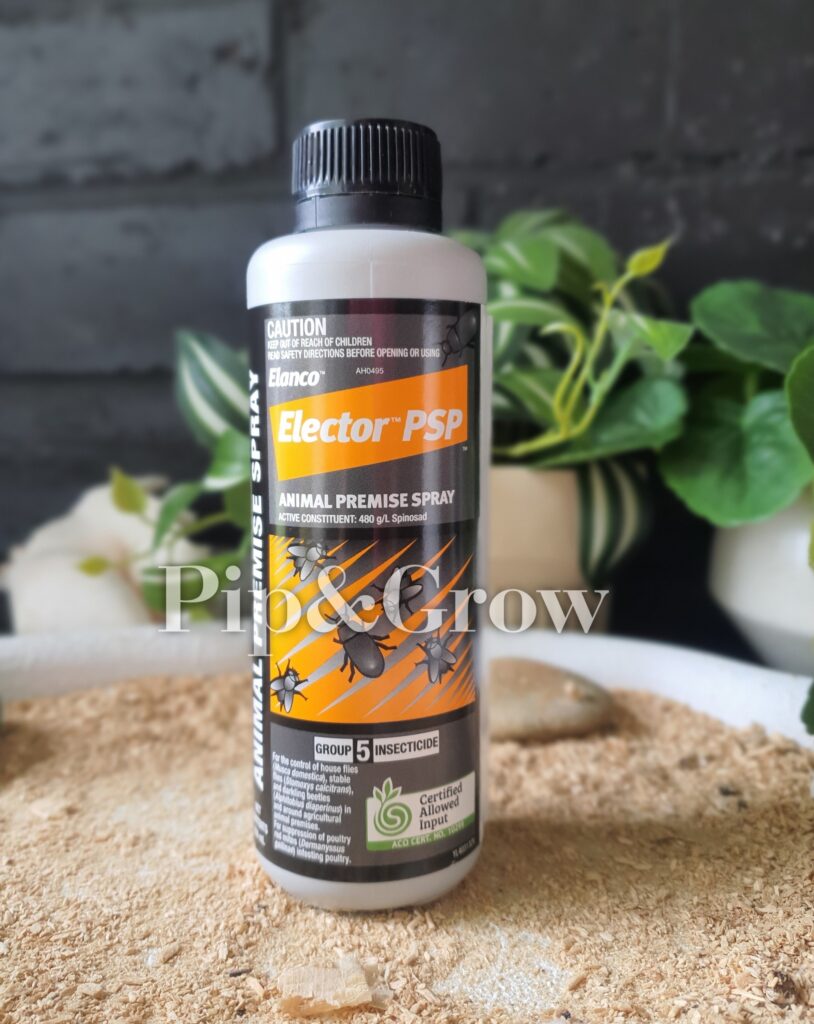
- Elanco Elector PSP is also gaining popularity among breeders due to its safety and effectiveness. While it may offer excellent results, the cost factor may pose a challenge for those with limited budgets.
- Poultry dust and Pestene powders are commonly utilized for dusting nest boxes in poultry management. Some keepers opt for Veggie dust as a more cost-effective alternative, as it contains the same active constituent as Rotenone. However, it’s worth noting that Veggie dust is less concentrated than Pestene, which may necessitate using larger quantities or applying it more frequently to achieve comparable results.
When using these products, it’s crucial to read the product label carefully and follow the dosage and instructions provided. Additionally, always use appropriate protective gear such as gloves, goggles, and a mask to prevent skin contact, eye irritation, and inhalation of fumes. Ensure adequate ventilation in the application area to minimize exposure to potentially harmful chemicals. Adhering to the manufacturer’s instructions and safety guidelines is essential to mitigate risks to both yourself and your flock.
Chemical Control – Chicken
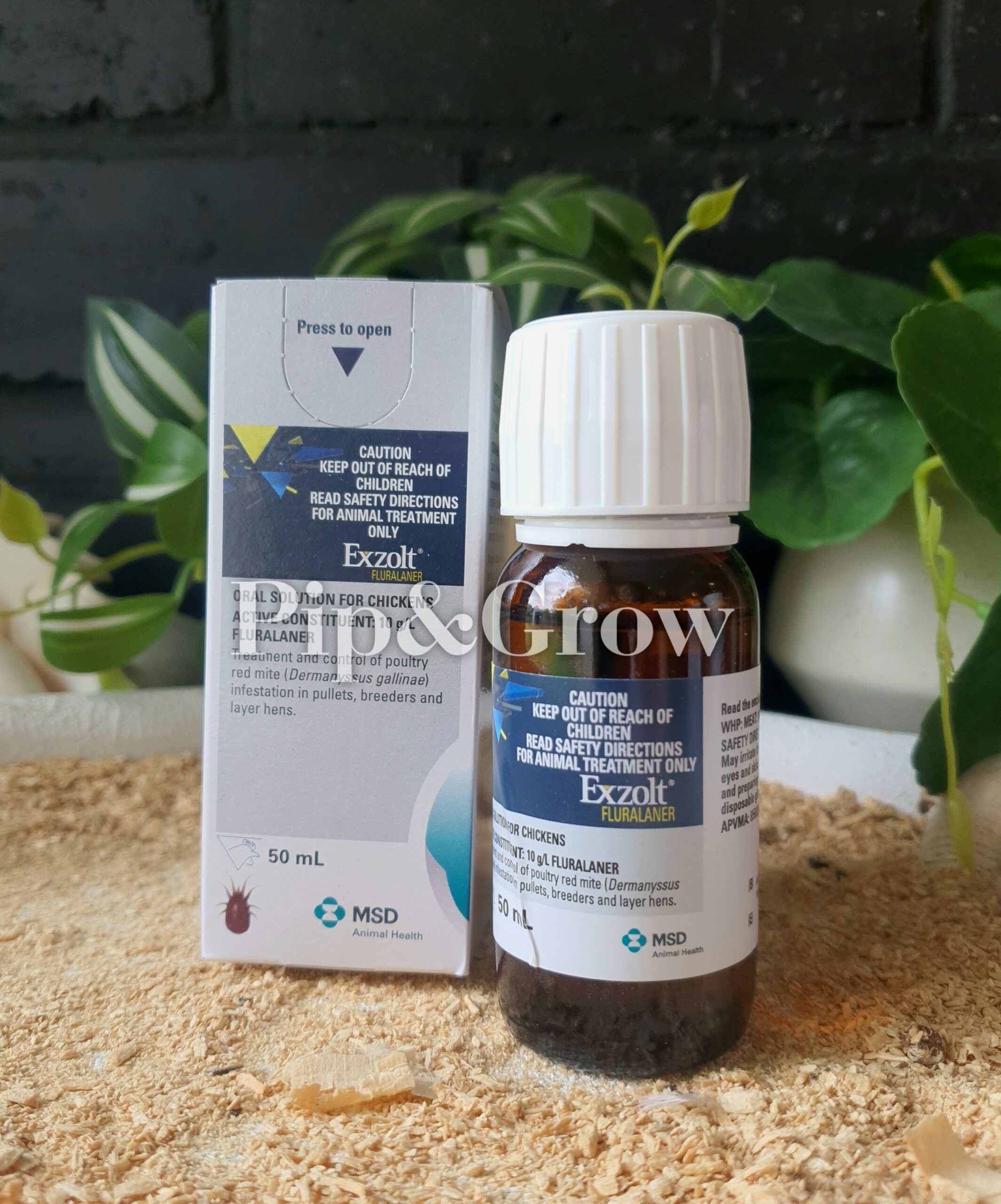
- Exzolt, is an oral solution designed to combat red mites in poultry. It offers systemic action, this means that any mites feeding on treated birds will be affected, making it particularly effective in situations where there’s uncertainty about whether the pen has been fully treated with contact insecticide. While the initial cost may seem high, when considering the total labor and expenses involved in purchasing other chemicals, the overall cost may not be as prohibitive as it appears.
- Lice and Mite Spray can be used on housing surfaces and on chicken, available from poultry supplies, pet store and fodders.
- Ivermectin, or brands containing active constituents ending with “***ectin,” are commonly used to treat external parasites such as mites, lice, and certain types of worms in sheep and cattle. These treatments, available under various brand names like Ausmectin and Mectec, typically involve spot-on applications directly onto the skin of the animal, usually at the back of the neck or between the shoulder blades. The necessary quantity varies depending on the concentration of the product, so it’s advisable to inspect the label and determine the dosage based on the weight of the chicken. For Ausmectin cattle and sheep pour-on, the recommended dosage is 0.1ml per kilogram, which equates to merely a drop.
While ivermectin is considered safe and effective for controlling parasites in many species of farm animals, it’s important to note that it is not specifically approved for use in poultry by regulatory agencies in many countries, including Australia. However, despite lacking official approval, it is often used off-label by poultry keepers for treating external parasites like mites and lice.
Due to the limited official testing and data available on the safety of ivermectin in poultry, as well as the potential risks associated with consuming eggs or meat from birds treated with this medication, poultry keepers should exercise caution and carefully consider the implications before using.
Ivermectin read more here
Biological control
Biological control methods offer a more environmentally friendly and sustainable approach to mite management compared to chemical treatments. However, they may require more time and effort to establish and may not provide immediate results. Additionally, it’s essential to ensure compatibility with other pest management practices and to monitor effectiveness regularly.
Predatory bugs for Red Mite control. These mites, such as Hypoaspis miles (formerly known as Stratiolaelaps scimitus), are natural predators of red mites and can be introduced into the poultry environment to help manage mite populations which can be purchased from Bugs for Bugs. More info found here
Natural control
Natural control methods offer a safer and more environmentally friendly alternative to chemical treatments for mite management in poultry. However, they may require more frequent application and diligence to achieve effective control.
- Alphamites DW : organic feed supplement known for boosting immunity and providing antioxidants. While its main aim is to improve poultry health, it’s also shown promise in managing red mite outbreaks. it alters the digestible characteristics of poultry blood, deterring red mites. This dual benefit makes it a holistic solution for both poultry health and pest control, offering poultry keepers an effective approach to bird care and mite prevention. It is a registered certified organic product in EU.
- Essential Oils : Certain essential oils possess natural insecticidal properties that make them effective in repelling mites. These oils can be diluted with water or a carrier oil and then applied to various surfaces within the poultry housing, including coop walls, roosts, and nesting boxes. Alternatively, they can be mixed into bedding material to discourage mite infestations.
While these essential oils can offer benefits in repelling insects and creating a pleasant environment for poultry, it’s crucial to handle them with care. Avoid using unless safety is certain. Proper dilution is essential to prevent potential irritation or adverse reactions in birds. It’s advisable to use them sparingly and only on housing surfaces, avoiding direct application to the birds themselves. Watch for any signs of discomfort, such as excessive grooming, respiratory issues, or unusual behavior, which may indicate sensitivity to the oils. If any adverse reactions are observed, discontinue use immediately and consult with a poultry health expert for further guidance. - *Diatomaceous Earth (DE): Diatomaceous earth is a natural powder made from the fossilized remains of diatoms, a type of algae. When applied to poultry housing, It can can help control mites by absorbing oils and fats from their exoskeletons, ultimately leading to dehydration and death. When using DE in poultry environments, it’s crucial to use food-grade DE, which is safe for use around animals and humans. Food-grade DE is processed to remove impurities and contaminants, making it suitable for agricultural and food-related applications. Avoid using industrial-grade DE, which may contain additives or contaminants that could be harmful to poultry or humans.
However DE is a fine powder composed of microscopic silica particles. Inhalation of DE dust can irritate the respiratory tract and lungs, prolonged or repeated exposure to high levels of DE dust potentially leading to respiratory issues such as Silicosis. When applying DE in poultry housing, it’s essential to take precautions to minimize dust inhalation. Wear a dust mask or respirator to protect your respiratory system.
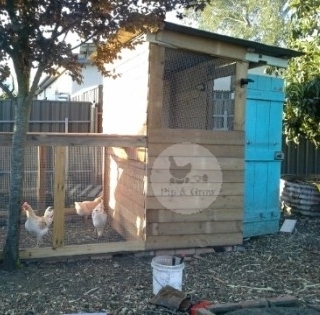
Our Experience
Unfortunately if your chicken coop is made with timber, it is usually impossible to kill the entire colonies of red mites. Despite treatment efforts, completely eradicating entire colonies of red mites is typically unachievable. While treatments may appear to substantially reduce mite populations, the presence of numerous hiding spots within the coop—places where chemicals and sprays cannot penetrate—means that some mites will inevitably evade extermination.
When we embarked on our first chicken-raising journey, we constructed our inaugural coop using timber, complete with a charming farm-style door. Unfortunately, red mites infiltrated it, initiating a relentless battle that spanned over three months. We employed various methods, including pressure washing, bleaching, multiple applications of Malaban wash from the roof down to the ground, nightly blow torching, flea bombs, and even painting every internal surface. Despite our efforts, the mites persisted in their return. Eventually, we made the difficult decision to abandon the coop. During its demolition, we discovered the colonies of mites were entrenched in inaccessible areas where sprays and chemicals couldn’t reach, such as beneath the roof sheeting, between overlapping timbers and even inside unscrewed screws or removed nails. Although the number of mites had decreased, the survival of even a single mite could rapidly lead to the resurgence of hundreds or thousands. It became evident that it was a battle we could never truly win or bring to an end.
Through years of experience, we’ve gathered valuable lessons in poultry management. Our pens are constructed with metals, safeguarding them against wild birds and rodents. Regular monitoring of our birds and roosts has become a standard practice. We’ve learned that prevention is always more manageable than dealing with infestations. Proudly, we’ve remained free of red mites since 2019.
We understand the daunting task of battling red mites and the stress it can bring. Our recommendation for outbreaks is to address them aggressively from every angle. We advocate for a comprehensive approach, repeating treatments every two weeks to disrupt the mite life cycle. Even after treatment, it’s crucial to continue monitoring regularly to ensure victory in the battle against red mites.
How to check for mites, lifecycle and treatment
Mites of Poultry
Red Poultry mites infestation
